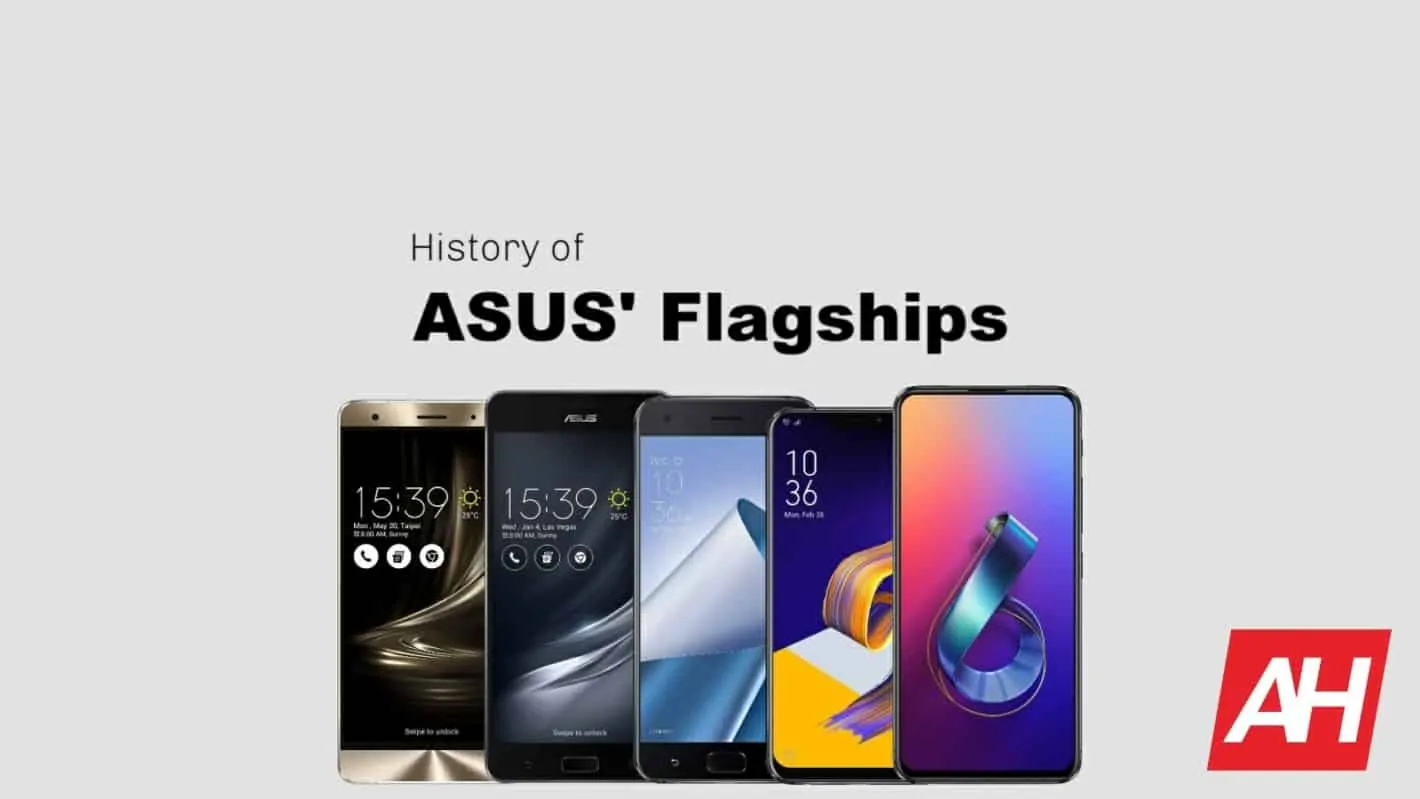ASUS has kind of been all over the place when it comes to its flagship smartphone series until the ZenFone 3 Deluxe arrived back in 2016. The company did not really have a proper flagship until this phone landed, and back then, it actually managed to stand out from the crowd in terms of the design.
The ZenFone 3 Deluxe was followed by a number of other phones, though interestingly enough, ASUS did not really stick to one name for its flagship smartphone series. The company did, however, release several rather interesting high-end devices which we’re here to take a look at. It is also worth noting that new phones will be added to this list as ASUS announces them.
ASUS ZenFone 3 Deluxe

The ASUS ZenFone 3 Deluxe was announced back in May 2016. The company used premium build materials here, and the phone sports a vertical fingerprint scanner on the back. The phone includes three capacitive buttons below the display, and a single camera on the back. Its main camera does protrude on the back a bit, and it is flanked by a dual-LED flash, and a sensor for laser autofocus.
The ZenFone 3 Deluxe features a 5.7-inch fullHD Super AMOLED display, 4GB / 6GB of RAM and 64GB / 128GB / 256GB of expandable storage. The device is fueled by the Snapdragon 820 or 821 SoC (depending on the model), and it shipped with Android 6.0 Marshmallow out of the box, while Android 8.0 Oreo is the latest version of Android it received. A 23-megapixel camera is included on the back of this phone, while a 3,000mAh battery sits on the inside, and it supports Quick Charge 3.0 fast charging.
ASUS ZenFone AR

The ASUS ZenFone AR was a considerably different smartphone to the ZenFone 3 Deluxe, and it was announced in June 2017. This phone includes a rather interesting setup on the back, as it sports a 23-megapixel camera with 4-axis OIS, 3x zoom, PDAF, and depth & motion tracking. The phone is compatible with both Tango and Daydream by Google, and it did stand out from the crowd back then, thanks to that camera setup on the back.
The phone also includes a front-facing fingerprint scanner, which is flanked by two capacitive keys. The device is fueled by the Snapdragon 821 quad-core processor, and it includes 6GB / 8GB of RAM and 64GB / 128GB / 512GB of expandable storage. An 8-megapixel camera sits on the front side of this phone, while a 3,300mAh battery is included on the inside. The phone does support Quick Charge 3.0 fast charging (18W).
ASUS ZenFone 4 Pro

The ASUS ZenFone 4 Pro was announced only two months after the ZenFone AR, in August 2017. The phone was not exactly too exciting in terms of the design, for the standard back then. It includes a front-facing fingerprint scanner, and two horizontally-aligned cameras on the back. The phone also features a rear-facing fingerprint scanner, and rather thick bezels above and below the display.
The ZenFone 4 Pro features a 5.5-inch fullHD AMOLED display, 6GB of RAM and 64GB / 128GB of expandable storage. Qualcomm’s Snapdragon 835 fuels this phone, while 12 and 16-megapixel cameras sit on its back. Android 7.1.1 Nougat came pre-installed on this phone, while Android 8.0 Oreo is the latest update that rolled out to the device. A 3,600mAh battery was also a part of the offering, together with 18W charging.
ASUS ZenFone 5z

The ASUS ZenFone 5z was announced in February 2018, and it is made out of metal. The phone includes two vertically-aligned cameras on the back, and a rear-facing fingerprint scanner. The device also sports a rather wide display notch, and thin “chin” below the display. This handset also features rounded display corners, while Android 8.0 Oreo came pre-installed on it. Android 9 Pie update did roll out to the phone eventually.
The ZenFone 5z sports a 6.2-inch fullHD+ IPS LCD display, 4GB / 6GB / 8GB of RAM and 64GB / 128GB / 256GB of storage. Qualcomm’s Snapdragon 845 SoC fuels this phone, while 12 and 8-megapixel cameras sit on its back. An 8-megapixel camera is included on the phone’s front side, while the device sports a 3,300mAh battery. Support for 18W fast charging is also included here, same goes for stereo speakers, and a 3.5mm headphone jack.
ASUS ZenFone 6

The ASUS ZenFone 6 got announced in May 2019, and it is actually considerably different compared to its predecessors, from both the hardware and software standpoints. The ASUS ZenFone 6 barely has any bezel on it, there is a thin “chin” included below the display, but that’s about it. The phone does not include a display notch nor a display camera hole, instead, it utilizes dual flip cameras which can become front-facing cameras when you need them.
ASUS included a lightly altered version of stock Android on this phone, compared to its previous devices which included rather heavy skins. The phone is made out of metal and glass, while it is fueled by the Snapdragon 855 SoC. The phone includes 6GB or 8GB of RAM, depending on the variant, and it features a 6.4-inch fullHD+ IPS LCD display. Stereo speakers and a 5,000mAh battery are also a part of the package.

